The classes in Baldur's Gate 3—or the classes in Dungeons & Dragons—are all well-balanced and complement each other. Finding the best class comes down to how you want to play. Even when playing solo, you'll still manage the rest of your party, so you can experiment with multiple classes at once.
So, in some way, you'll play as a warrior, wizard, rogue, cleric, and explore the game's vast world in different ways. But deep down, you want to know: Which one is best to play? Have you never seen D&D before, except for the Chris Pine movie or the Dungeons & Dragons cartoon, so you have no idea how to choose a ready-to-play character or build your own? Then don't worry; we're here to explain.
First, there's no single best class in the game. They all complement each other and have unique functions that, combined, can make or break a campaign. So, if you're starting a campaign and don't even know what class your character should be, we'll explain them. If you have any questions, leave a comment.
Explaining the Classes
Your character's class is primarily about how you play and how you distribute your underlying skill scores, which depend on and influence the other skills you use to interact with the world. Each class has its strengths and weaknesses.
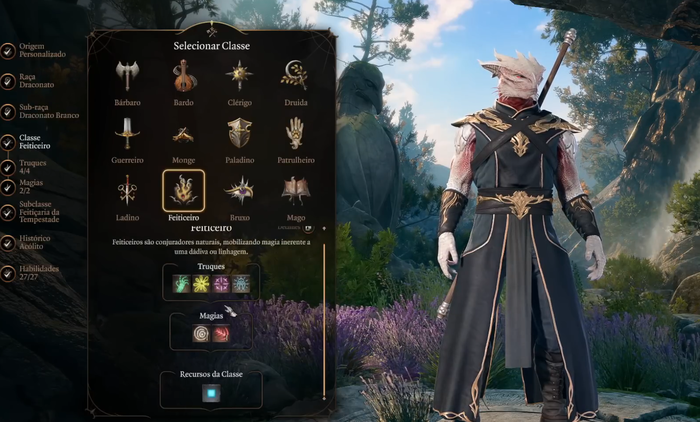
Fighters and Barbarians rely heavily on their Strength attribute. They can lift heavy objects, jump higher or farther, and, most importantly, deal more damage, and wield heavier weapons and armor. On the other hand, they don't rely heavily on their Intelligence. Mental tasks like riddles or magic are difficult or impossible for them. Wizards, on the other hand, rely heavily on their Intelligence to cast spells and solve puzzles, but lack Strength.
Rogues use their Dexterity to move stealthily, use short, swift blades, and attack enemies from behind, as do Archers, who rely on this skill score to hit their enemies with arrows. Bards and Sorcerers are both Charisma-based classes, for example. Their high Charisma also makes them good at skills like Persuasion, Deception, and Intimidation. These classes are better at getting into (and out of) trouble without fighting or lying. Wisdom-based classes, like Clerics or Druids, are more perceptive of their surroundings.
Each time you start the game or level up, Baldur's Gate 3 assigns your skill scores automatically, although you can adjust them manually in the character creator and place them wherever you see fit, but if you don't understand the game, it's best to let the game act automatically, and then your primary skill for each class will be your highest score always.
Create or Use an Origin Character?
Baldur's Gate 3 offers the option to create your own character or play as an Origin character, meaning you can choose one of the NPCs in your party and play as them. It's a perfect way to play if you don't really want to go through the process of choosing a race and backstory for your character.
The Origin characters are:
Gale: A human wizard with a dangerous and deadly magic within him;
Astarion: A half-elf, half-vampire rogue on the run from his master;
Wyll: A human sorcerer with a debt to demons;
Karlach: A Barbarian Tiefling with an explosive in her chest;
Shadowheart: A half-elf cleric carrying a mysterious artifact;
Lae'Zel: A Gythianki fighter searching for a stolen artifact;
The Dark Urge: A mysterious character with no memory and a thirst for blood;
Except for The Dark Urge, other characters cannot have their gender or appearance changed. Their class and attributes can be redefined later in the game.
That said, if you choose an Origin character, you'll also be limited to that character's predetermined story. Building your own character takes a bit more work at first, but you'll have much more freedom to experience the entire Baldur's Gate 3 story if you create a custom character.
We'll list all the classes below by how difficult they’re to play. Magic classes come last because, when playing them, you have to manage your spells and spell slots. And because punching things is much easier than memorizing spells.
Best Melee Class for Beginners: Fighter
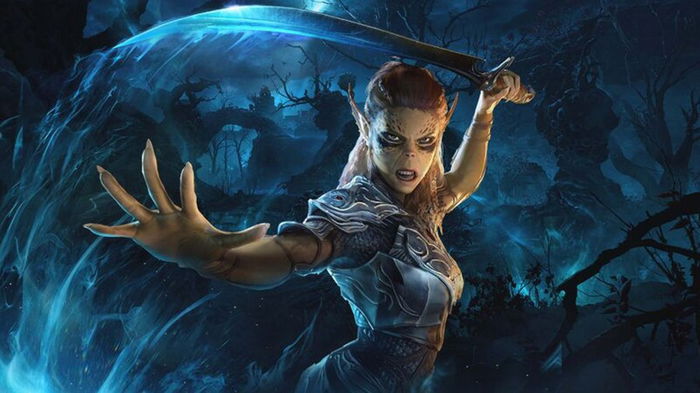
The Fighter is undoubtedly the most straightforward class to play in Baldur's Gate 3. You don't need to worry about magic, Ki Points, or any other complicated system. The focus is simple: spot an enemy, run at them, and strike hard.
They have access to all armor and shields right from the start, ensuring good resistance. Additionally, they choose a Combat Style that offers useful bonuses, such as increased accuracy or defense. Over time, they unlock abilities like health recovery and an ability that allows them to attack again during the same turn. At level 3, the Fighter can choose between three subclasses:
• Champion: Increases critical strike chance and keeps gameplay simple;
• Arcane Knight: Mixes magic with physical attacks;
• Battle Master: Uses tactical maneuvers to control the battlefield.
• Arcane Archer: Magic arrows: banish, blind, redirect.
For beginners, Champion is the most recommended. It's the option that requires the least management while still offering a good impact in combat.
Best Ranged Class for Beginners: Ranger
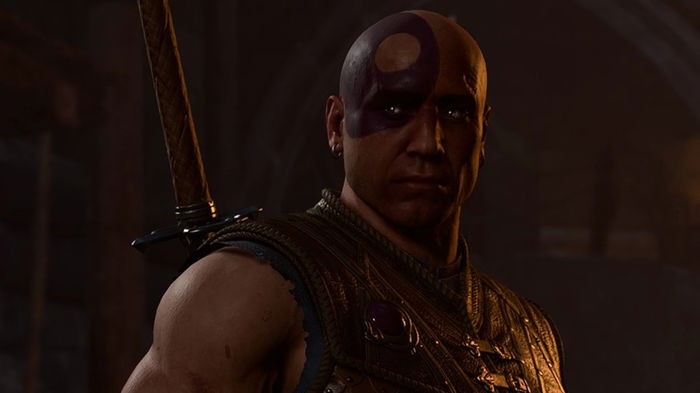
The Ranger is a good choice for those looking for an agile character who combines ranged attacks, stealth, and a touch of magic. It's a Dexterity-based class, with access to light and medium armor and a varied selection of weapons.
At the start of the game, the Ranger chooses a Favored Enemy and a Favored Terrain, which influence passive abilities and some spells. Upon reaching level 3, you choose a subclass from:
• Beast Master: gains an animal companion;
• Gloom Stalker: more stealthy and effective in dark environments;
• Hunter: focuses on direct damage skills.
• Swarmkeeper: Summons a magical swarm (of insects, moths, or jellyfish) that deals extra damage.
The Hunter is the most balanced subclass for beginners, offering versatility and reliable damage in combat.
Best Damage-Focused Class: Barbarian
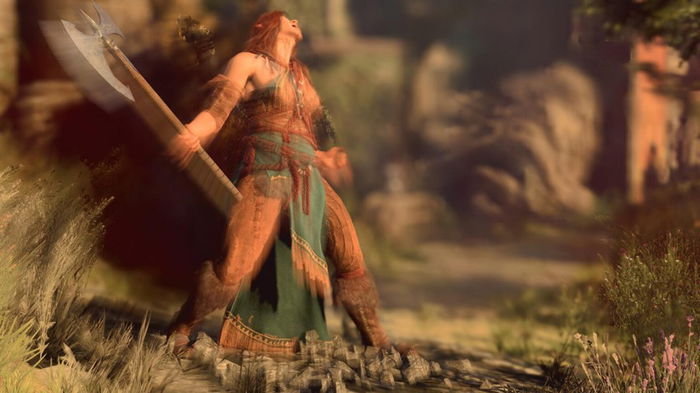
The Barbarian is a pure brawler. It's the ideal class for those who want to engage in combat without overthinking. Although only light and medium armor can be used, they have a good Armor Class (defense) even without equipment, thanks to their Unarmored Defense ability. The Barbarian's main characteristic is Rage, which increases their damage and reduces damage taken while active. At level 3, they can choose between:
• Wildheart: modifies Rage with animal-inspired abilities;
• Berserker: adds extra attacks and brutal options;
• Wild Magic: introduces random magical effects to Rage.
• Giant: Increased size, extra strength, and improved throws.
For beginners, Berserker is the most straightforward: more damage and more hits.
Best Magic Class for Beginners: Druid
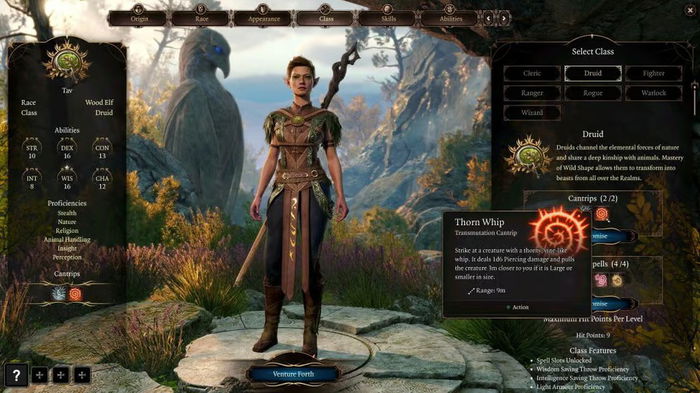
Druids are spellcasters who wield nature-related magic and can transform into animals. Even without access to the finest armor, they make up for it with versatility and the Shapeshifting ability—useful for both combat and exploration. At level 3, you choose between:
• Circle of the Land: Access to more spells per day and a focus on field control;
• Circle of the Moon: Allows you to transform into stronger creatures, such as bears;
• Circle of the Spores: Brings spells themed around decay and poison.
• Circle of the Stars: Spells focused on radiant damage.
The Circle of the Moon is ideal for beginners, as it allows you to face enemies directly even without weapons.
Best class for stealth: Rogue
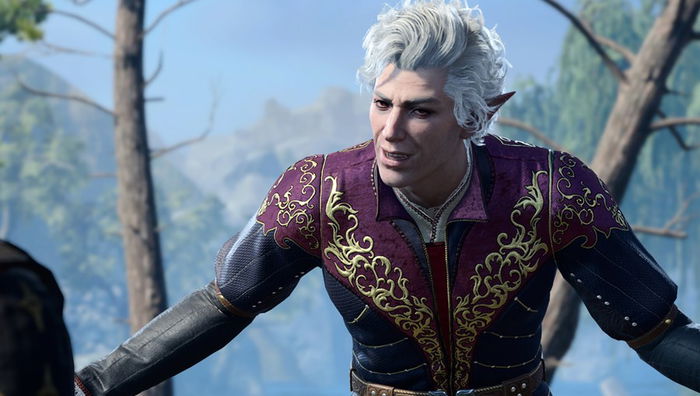
The Rogue is a master of stealth and precision. They use Light Armor and Finesse weapons, such as daggers and shortswords, which work with their Dexterity modifier. Their distinguishing feature is Sneak Attack, which deals significant damage if you have an advantage or an ally is nearby. Rogues can also use bonus actions like Dash, Disengage, and Hide, making them difficult to target.
The subclasses at level 3 are:
• Thief: gains an extra bonus action per turn;
• Arcane Trickster: blends magic with stealth;
• Assassin: deals extreme damage to unsuspecting enemies.
• Swashbuckler: Pirate style, elegant, and stealthy movements
The Thief is best suited for beginners. Simple, fast, and very effective.
Best Hybrid Class: Paladin
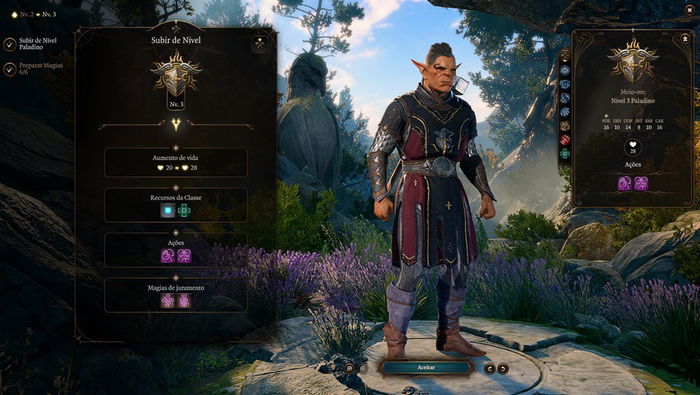
The Paladin is the ideal combination of melee combat and divine magic. They can wield any armor and shield, and their range of weapons is wide. They’re one of the most resilient and versatile classes. Their spells are themed around healing, punishment, and protection. Upon reaching level 3, you swear an Oath that defines your magical abilities:
• Oath of the Ancients: focuses on healing and protection;
• Oath of Devotion: more focused on defense and support;
• Oath of Vengeance: offensive and relentless.
• Oath of the Crown: Focus on taunt, absorb allied damage.
The Oath of the Ancients is ideal for beginners because it balances damage, healing, and defense. However, there are rules here: If you break your oath, that is, do something you shouldn't, you can lose your paladin status and become a Fallen Paladin, thus losing your previous subclass and assuming a new Oathbreaker, gaining dark abilities focused on damage, control, and intimidation.
Best class for mobility: Monk
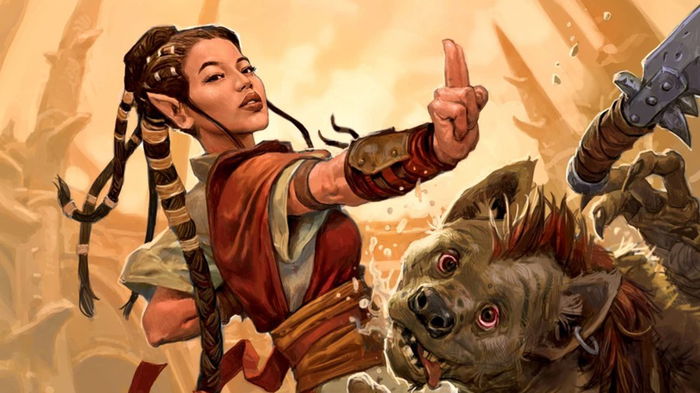
The Monk is fast, agile, and uses their own body as a weapon. They wear no armor, but have a good Armor Class based on Dexterity and Wisdom. Their unarmed attacks deal more damage than normal, and they can attack multiple times per turn using Ki Points. At level 3, you choose between:
• Way of the Four Elements: Combines spells with physical attacks;
• Way of the Open Hand: Focuses on enemy control and pure combat;
• Way of Shadow: Ideal for stealth.
• Way of the Drunken Master: Uses drinks to recover Ki and stuns enemies.
For beginners, the Way of the Open Hand is the simplest and most straightforward.
Best Simple Magic Class: Warlock
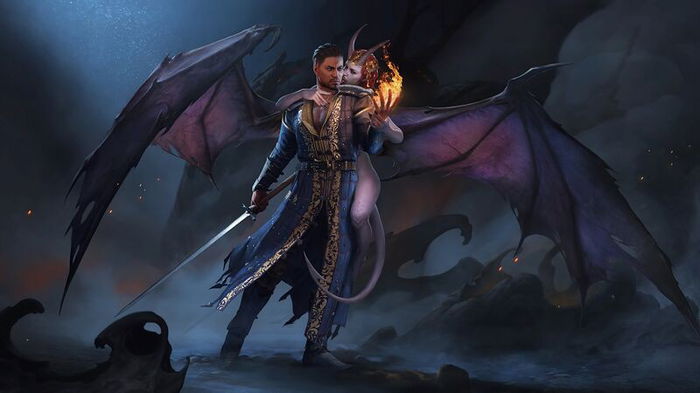
The Warlock is a spellcaster who functions quite differently from the others: they have few spell slots, but regain them on short rests. Furthermore, they rely on his Patron to define some of their spells. Upon character creation, you choose his subclass:
• The Fiend: Infernal-themed spells;
• The Great Old One: Psychic powers and mental effects;
• The Archfey: Fae-themed control and illusion.
• The Hexblade: Supernatural weaponry, soul absorption, necromancy.
The Great Old One is best suited for beginners, offering good defensive options and enemy control.
Best Healing Class: Cleric
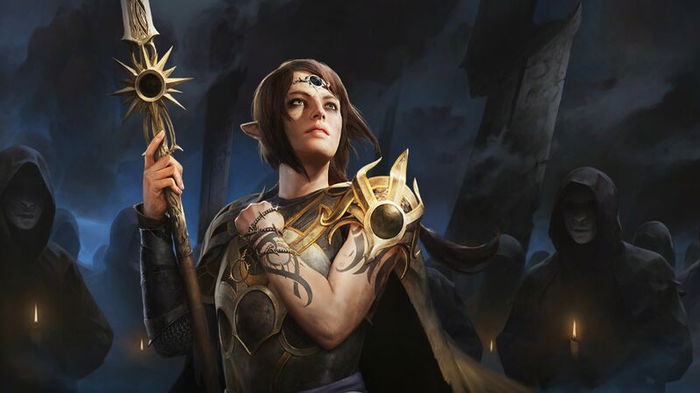
The Cleric is the best healer in the game. They have access to a wide variety of divine spells and can use Channel Divinity to unleash unique effects like Turn Undead or Guided Strike.
You choose your Domain (subclass) at creation:
• Life: Powerful healing;
• Light: Focus on radiant damage and field control.
• Trickery: Stealth and illusions.
• Knowledge: Out-of-combat abilities.
• Nature: Druid-themed mix.
• Tempest: Thunder and lightning damage.
• War: Direct combat.
• Death: Necromancy, Corpse Explosion.
The Light Domain is excellent for beginners, with powerful offensive and defensive spells.
Best Support Class: Bard
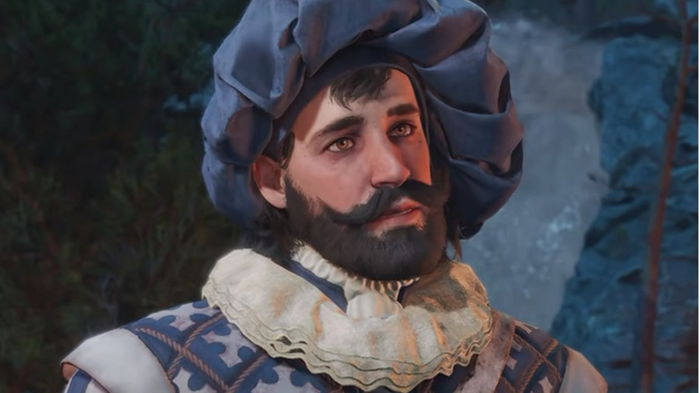
The Bard is the king of support. With Charisma as their primary attribute, they enchant allies and enemies with magic and words. They have access to Bardic Inspiration, which enhances allies' plays, and a very flexible spell list. At level 3, they can choose from:
• College of Lore: focuses on skills and enemy control;
• College of Valour: strengthens allies in combat;
• College of Swords: mixes direct combat with a performance style;
• College of Glamour: Group healing, enchanting, and enemy command.
The College of Valour is the most balanced and easy to use in the early game.
Best class for magic damage: Wizard
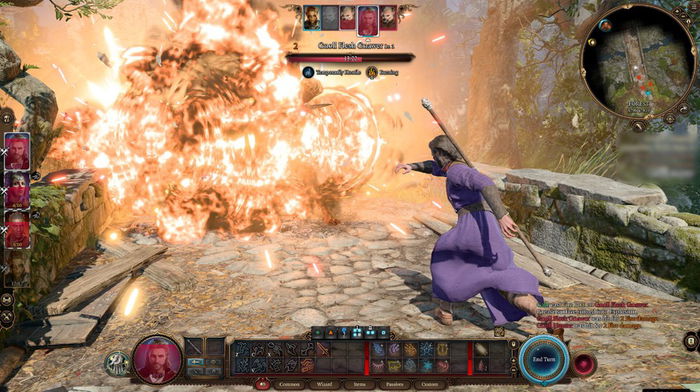
The Wizard is the master of magic. It's the class with the greatest variety of spells and the most spellcasting slots. Its main disadvantage is its fragility: without armor and with limited weapons, it relies entirely on magic for everything. When creating your character, you choose your school of magic from:
• Abjuration: defense;
• Conjuration: summoning;
• Divination: foresight;
• Enchantment: mind control;
• Evocation: direct damage;
• Illusion: tricks and deception;
• Necromancy: death and reanimation;
• Transmutation: transformation.
• Bladesinging: fights with magical swords.
For beginners, Evocation is the best choice: high, direct damage.
Best class for social interaction: Sorcerer
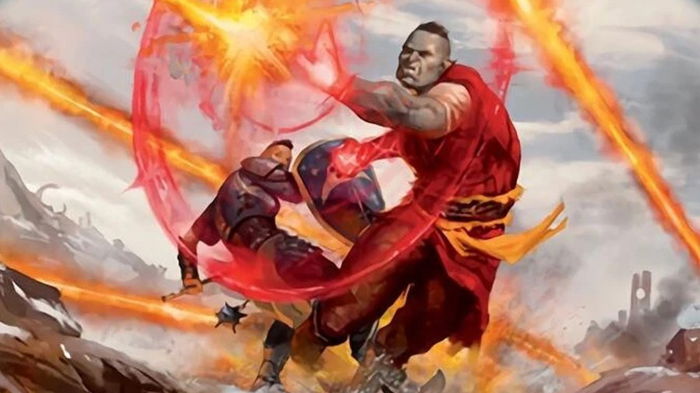
The Sorcerer is a Charisma-based magical class, making them excellent for dialogue and interactions outside of combat. Their magic comes from within (they don't study magic; they're born magical), and they have access to Metamagic—abilities that customize their spells. Upon creation, you choose:
• Wild Magic: Random and unpredictable effects;
• Draconic Bloodline: Dragon-themed defensive and magical bonuses;
• Storm Sorcery: Movement and resistance when casting spells.
Draconic Bloodline is the best option for beginners, as it offers extra resistance and reliable damage.
Which BG3 class (and subclass) is best for you?
Distinctions like spellcasters vs. brawlers or melee vs. ranged don’t really work in Baldur’s Gate 3 (or in D&D). There's a lot of overlap in classes—especially as you level up. And that means there's no easy way to say one class is better (or even worse). Instead, focus on what you want to do (or how you want to do it), and go from there.
Now, talk to us and tell us how you chose to play? What's your favorite class? Leave a comment and tell us your favorite way to play Baldur's Gate 3.












— Comments 0
, Reactions 1
Be the first to comment